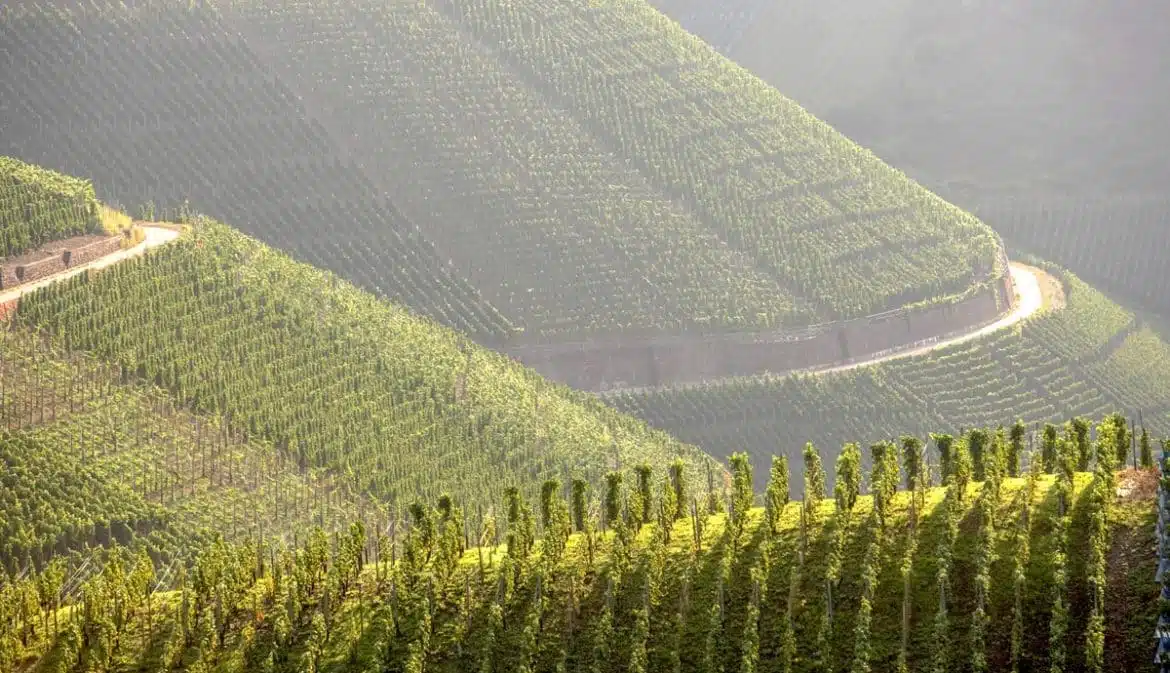Sponsored content.
There are various incetives to try and taste a German pinot noir. The main reason is to overcome your habits open to new horizons.
On top of that, the geographical proximity makes them a local product to be reckoned with. While they rival Burgundy wines in quality, their price is still quite accessible.
The pinot noir is one of the greatest grape varieties in the world, present in specific and generally small regions. Germany is a popular place for this grape variety, with 11% of its vineyards dedicated to it, it’s the 3rd biggest producer of pinot noir worldwide.
Recent Spätburgunder cuvée are marvelous, reaching exceptional aromas. The work that has been initiated 30 years ago finally bears fruit. Grafts and massale selection from Burgundy bring delicacy and elegance to those wines. Moreover, presence of schist, red sandstone, limestone or slate in German soils reinforce the distinctive characteristics of the Spätburgunder. But the numerous sloping lands (up to 40%), frequently located on narrow plots, require acrobatic and tedious work by hand. A great deal of care is brought to the vineyards, without any mechanics used. German winegrowers let time do its work, by respecting the environment and climate changes.
They have dedicated entire terroirs, ideally south-facing, to pinot noir.
Now known internationally, recent Spätburgunder millésimes are excellent and highly sought-after. The trade press has thus rated Rudolf Fürst’s 2018 vintage, the GG Hunsrück, 99/100. A first for a German red wine!
Last but not least, those wines age very well and can be kept for a long time in the cellar.
Weingut Rudolf Fürst in Bürgstadt (Franken Region)
For over 400 years, this family of winegrowers runs one of the pioneer estates of Spätburgunder in Germany. The owners, Paul & Sebastian Fürst, are known for their constant search for elegance and finery. Their wines often present pale colors contrasting with their powerful aromatic force. The outcome in the bottle reveals a great art.

Weingut Bernhard Huber in Malterdingen (Baden Region)
700 years ago, the presence of Cistercians monks in that region explains the deep rootedness of Spätburgunder in Malterdingen. Bernhard Huber planted high density vineyards to make them reach as deeply as possible into the limestone and reveal the best this soil can offer. This small production is of a rare quality. The estate is on top of its game and of world-class level

Weingut Meyer-Näkel in Dernau (Ahr Region)
The Ahr Valley is a top place for winegrowing in Germany, especially for red wines. Already the Romans cultivated vineyards on schist-filled, steep hills. This smallest region in Germany is planted to 80% with Spätburgunder. The sisters, Dörte and Meike Näkel, representing the 5th generation, work to ensure the best culture possible for this unique variety of wine, prioritising quality over mass production, as their father always did. Smoked and spiced notes found in their wines bring structure and length.

Weingut Daniel Twardowski in Neumagen (Moselle Region)
The owner, Daniel Twardowski, took the crazy challenge to cultivate Spätburgunder vineyards on the steep, slate hills of the Moselle Region, while taking advantage of climate change and sunny hills. Even if called crazy, the winegrower has persevered. This tenacity has paid off today. Each year, those wines gain in purity and precision. This micro-production, with around 400 bottles/year, is already a hit for world-class critics.

Discover the complete selection at wengler.lu

